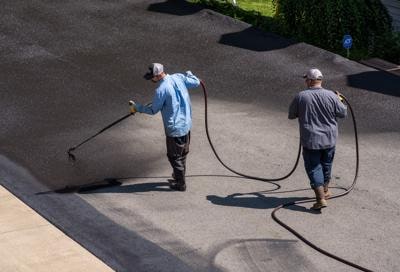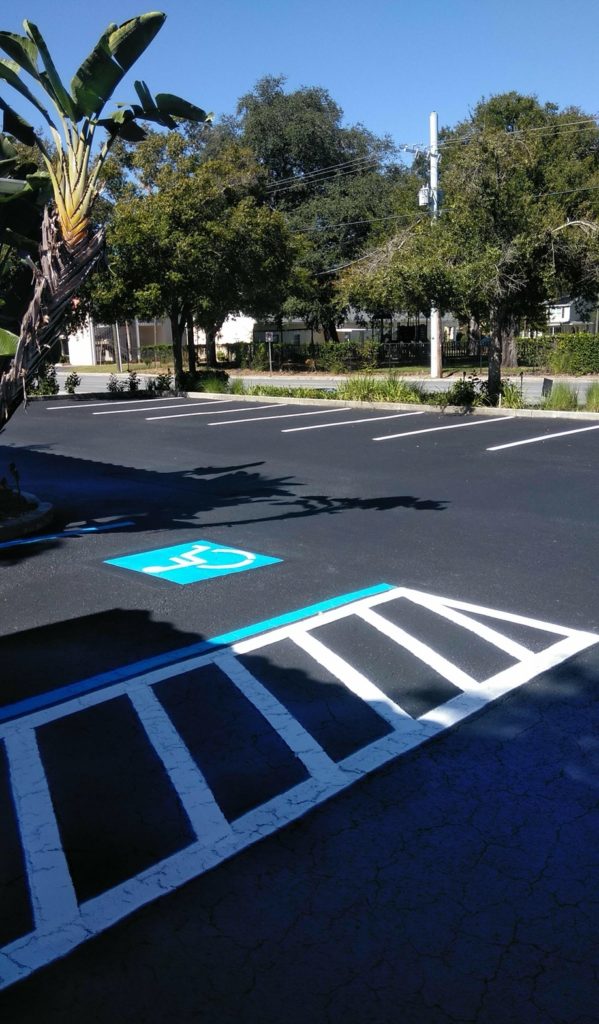Warm Mix Asphalt: A Lasting Option for Pavement
Warm Mix Asphalt (HMA) has actually emerged as a leading sustainable option for pavement solutions, providing a myriad of environmental advantages and cutting-edge modern technologies. As the need for environment-friendly construction techniques grows, discovering the nuances of HMA's sustainability can give useful insights into the future of sidewalk services.
Ecological Benefits of Hot Mix Asphalt

Moreover, Hot Mix Asphalt aids to reduce urban warm island effects. Its dark shade takes in sunshine, minimizing the amount of warm reflected back right into the environment compared to lighter-colored sidewalks. This can lower ambient temperatures in city areas, reducing the demand for air conditioning and eventually reducing energy intake.
On top of that, Hot Mix Asphalt adds to boosted stormwater management. Its porous nature permits water to infiltrate the pavement and reenergize groundwater products, decreasing runoff and the risk of flooding. These environmental benefits make Warm Mix Asphalt a sustainable selection for paving highways and roads.
Energy Efficiency in HMA Production
Is power efficiency an important aspect in the production of Hot Mix Asphalt (HMA)? Power plays a considerable function in the manufacturing of HMA, affecting both cost and ecological sustainability. One crucial element of energy performance in HMA production is the use of cozy mix asphalt (WMA) innovations.
Moreover, innovations in plant modern technologies have actually led to more energy-efficient HMA manufacturing processes. By enhancing power usage in HMA manufacturing, the market can lower its carbon impact while preserving top quality sidewalk products.
Recyclability of Hot Mix Asphalt
The recyclability of Hot Mix Asphalt (HMA) is a pivotal facet of its sustainability and long-term environmental influence. HMA is one of one of the most recycled materials in the United States, with over 100 million tons of redeemed asphalt pavement (RAP) being reused each year in new pavement construction. Recycling HMA supplies several ecological advantages, such as minimizing the demand for virgin products, lowering energy consumption throughout manufacturing, and decreasing the amount of waste sent to garbage dumps.
The procedure of reusing HMA includes grating the existing sidewalk, squashing it right into smaller sized items, and mixing it with brand-new accumulation and asphalt binder to create a recycled mix. This recycled mix can often carry out in addition to and even much better than standard HMA, while calling for less resources and creating reduced greenhouse gas discharges. By integrating RAP into new pavement projects, road agencies can conserve natural deposits, lower costs, and minimize the environmental footprint of roadway construction and upkeep tasks. On the whole, the recyclability of HMA plays a considerable function in promoting sustainable methods within the sidewalk industry.

Long-Term Performance of HMA
Asphalt pavements demonstrate longevity and resilience over an extended period, reflecting the long-lasting efficiency of Hot Mix Asphalt (HMA) The durability of HMA can be credited to its capacity to withstand heavy website traffic tons, rough weather, and the results of aging. Researches have actually revealed that properly designed and appropriately built HMA sidewalks can last for two decades or even more with routine upkeep. The trick to making the most of the long-lasting performance of HMA depends on utilizing high-grade materials, following best techniques in building and construction, and applying reliable maintenance techniques. Proper water drainage, regular assessments, and timely repairs are essential for maintaining the architectural stability of HMA pavements with time. Furthermore, improvements in HMA innovation, such as using polymer-modified binders and cozy mix asphalt, have better improved the sturdiness and longevity of HMA sidewalks. By prioritizing quality building and maintenance techniques, HMA continues to prove itself as a lasting and cost-effective remedy for resilient sidewalk facilities.

HMA: Sturdiness and Sustainability
Demonstrating both toughness and sustainability, Hot Mix Asphalt (HMA) has actually ended up being a cornerstone in the construction of resilient pavement frameworks - regrading. HMA's resilience comes from its capability to endure heavy tons, extreme weather problems, and high website traffic quantities, making it a trustworthy option for streets, freeways, and flight terminal paths. The composition of HMA, which commonly includes aggregates, binder, and filler, plays a crucial function in boosting its longevity and resistance to tear and put on
Furthermore, HMA's sustainability hinges on click here now its recyclability and energy-efficient manufacturing this link process. The capability to recycle reclaimed asphalt pavement (RAP) in new HMA combinations reduces the demand for virgin products and decreases the environmental effect of sidewalk building and construction and maintenance. Furthermore, the power performance of producing HMA hinges on its lower blending temperature levels compared to other pavement materials, bring about reduced energy consumption and greenhouse gas discharges.
Final Thought
To conclude, warm mix asphalt (HMA) provides a sustainable remedy for sidewalk with its eco pleasant characteristics. HMA's recyclability, energy efficiency in production, and long-term sturdiness make it a green selection for roadway building and construction. By conserving natural deposits, decreasing waste, and lowering greenhouse gas emissions, HMA plays an essential role in promoting sustainability in infrastructure development. Its capacity to minimize city warmth island effects further emphasizes its relevance in developing ecologically conscious and resilient sidewalk systems.
HMA is one of the most recycled products in the United States, with over 100 million heaps of redeemed asphalt pavement (RAP) being reused annually in new sidewalk construction.The procedure of reusing HMA includes milling the existing pavement, squashing it into smaller pieces, and mixing it with new accumulation and asphalt binder to produce a recycled mix.Asphalt sidewalks demonstrate resilience and strength over an extensive period, showing the lasting efficiency of Warm Mix Asphalt (HMA) In addition, developments in HMA innovation, such as the usage of polymer-modified binders and warm mix asphalt, have actually better improved the resilience and durability of HMA sidewalks. The capacity to recycle recovered asphalt sidewalk (RAP) in brand-new HMA combinations reduces the demand for virgin materials and decreases the navigate to this site environmental effect of pavement construction and maintenance.